In writing my new book about games (which is, by the way, available to U.S. customers as a signed copy with bonus cards), I learned that a good game must strike a careful balance.
It should be somewhat clear which moves are better than others; otherwise you’re stumbling in the dark.
But it should never entirely clear; otherwise you’re just executing predetermined steps.
In this respect, puzzles and games are almost opposites. A puzzle’s solution must be crisp and distinctive. When you solve a good puzzle, you know it. In fact, you want to scream it from the rooftops. Heck, you would scream it form the rooftops, if not for (1) the notorious slipperiness of rooftops, and (2) the even stronger impulse to zip your lips and foist the puzzle on a friend.
Nothing in life, with the possible exception of crème brûlée, is as satisfying as a puzzle. Nowhere else does so brittle a surface give way to such a creamy inner goodness (again, crème brûlée excepted).
Yet good puzzles, like good games, are immensely varied. In fact, just glancing at my bookshelf and picking five current favorites, each imparts its own distinct vision of what makes a great puzzle.

You are, just by virtue of being a literate person, a stone-cold expert in language. You know dozens of grammatical rules, hundreds of idioms, and tens of thousands of words. Bring that expertise into any other domain, and they’d give you a PhD; take it into language, and we just call it “being fluent.”
What better forum could there be for stretching our puzzle-solving skills?
Bellos draws these gems from the Linguistic Olympiad, an event that fuses the logical joy of puzzles with the vast richness of human language. Each puzzle is a fresh lesson in a complex and beautifully patterned system of communication.
Most are exercises in blind translation, but there’s variety beyond that. Here’s one of the book’s opening riddles:
Annie Jones sat angry-legged on her Uncle John’s façade porch, her favorite rag doll clutched under one supply. The deceased afternoon sun polished through the departs of the giant oak tree, casting its flickering ignite on the cabin. This entranced the child, and she sat with her confront changed upward, as if hypnotized. A stabilize hum of conversation flowed from inside the cabin.
I’ve omitted Alex’s instructions, but I bet you can figure out what’s going on.
Anyway, I may never know how those archaeologists felt when they first stumbled upon and decoded the Rosetta Stone. But this book may be the closest thing.
Geometry Snacks by Ed Southall & Vincent Pantaloni
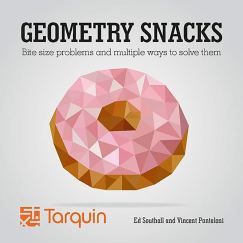
I’m a longtime admirer of Catriona Agg’s geometry puzzles. (One of these days I’ll just go whole hog and convert this blog into a Catriona fan site.) But Catriona has inspirations of her own: among others, she’s building on the elegant collaborative work of Southall and Pantaloni.
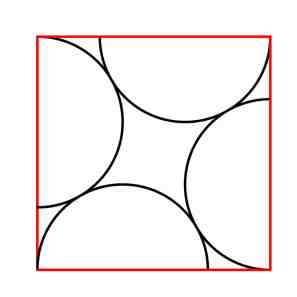
Geometry is a puzzler’s paradise. A few quick lines can create a shape full of nuanced structure, where surface patterns hint at deeper laws. Such puzzles also lend themselves to many lines of attack; scattered roads of inquiry converge on the same destination.
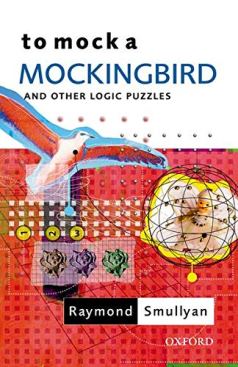
I almost chose Smullyan’s more famous What Is the Name of This Book?, which is full of the classic “knights and knaves” puzzles that he popularized. But I’ve already written my own tribute to those.
This book is something more extraordinary: a set of puzzles about birdsongs that walks you, step by step, to the brink of Gödel’s Incompleteness Theorems.
The madness begins like this:
A certain enchanted forest is inhabited by talking birds. Given any birds A and B, if you call out the name of B to A, then A will respond by calling out the name of some bird to you; this bird we designate by AB…
A mockingbird is… a bird M such that for any bird x, the following condition holds: Mx = xx…. its response to any bird x is the same as x‘s response to itself.
And it just gets zanier from there. While I was working through this book, filling pages with notation for birdcalls, my wife would roll her eyes and refer to it as my “homework.”
In Smullyan’s puzzles, logic is more than just the method: it’s the content, the pleasure, and the purpose. Whereas Bellos lets loose our linguistic faculties, and Southall and Pantaloni excite our visual and geometric powers, Smullyan shines the spotlight on the working of logic itself.
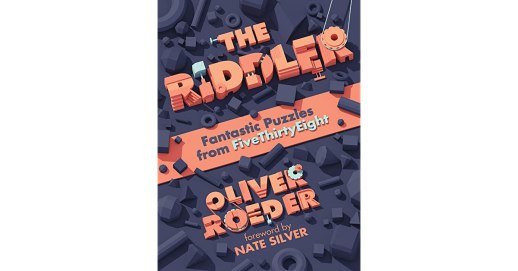
These puzzles emerged from a column at FiveThirtyEight (where Roeder’s successor Zach Wissner-Gross is still publishing great stuff). They have a wholly different flavor than the others on this list, because many of them can’t be solved by hand. The answer won’t come from staring at the page, or gazing off into space, or even jotting some notes on paper. You need a calculator. Sometimes even a computer.
Take this one (which I paraphrase):
There is a board game with a track of squares numbered 0 through 1,000. You begin on 0 and advance one roll at a time using a standard 6-sided die.
Before the game starts, you may place coins on three of the squares. If you land on one of the coins, you live. If you miss them all, you die. On which three spaces should you place the coins to maximize your chances of survival?
You may have intuitions. You may come up with a good heuristic. But in the end, it’s impossible to decide between the best candidates without diving into the calculation.
Yet the solution is still satisfying, still reveals a kind of insight about the system.
I find something radical about this. These are puzzles for the 21st century, puzzles of data science and probability, puzzles that befit a site founded by a statistician.
(And for more in the same vein, I recommend Project Euler.)
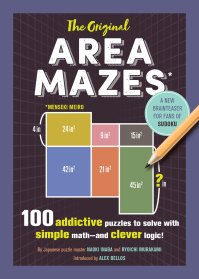
I came across this book because Amazon kept recommending it alongside Math with Bad Drawings. They’re a funny pair: whereas my book is an eclectic set of stories, essays, and cheap jokes at the expense of Wall Street (don’t worry, they can afford the expense), Inaba’s book is a focused collection of puzzles, all in the same style, like an alternate universe’s response to sudoku.
And frankly, I like these better than sudoku.

Instead of spending my time scanning a field of 81 boxes for the next useful piece of information, there are only a few elements in play. The challenge is less about finding the right clue, and more about using it wisely.
So there you have it. Five books, five styles, five visions.






![Erratum for “An inverse theorem for the Gowers U^s+1[N]-norm”](https://azmath.info/wp-content/uploads/2024/07/2211-erratum-for-an-inverse-theorem-for-the-gowers-us1n-norm-150x150.jpg)

